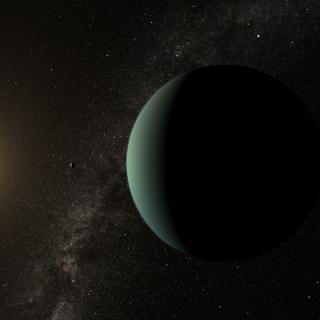Stellar ejecta gradually enrich the gas out of which subsequent stars form, making the least chemically enriched stellar systems direct fossils of structures formed in the early universe. Although a few hundred stars with metal content below one thousandth of the solar iron content are known in the Galaxy, none of them inhabit globular clusters, some of the oldest known stellar structures. These show metal content of at least ~0.2 percent of the solar metallicity ([Fe/H] > -2.7). This metallicity floor appears universal and it has been proposed that proto-galaxies that merge into the galaxies we observe today were simply not massive enough to form clusters that survived to the present day. Here, we report the discovery of a stellar stream, C-19, whose metallicity is less than 0.05 per cent the solar metallicity ([Fe/H]=-3.38 ± 0.06 (stat.) ± 0.20 (syst.)). The low metallicity dispersion and the chemical abundances of the C-19 stars show that this stream is the tidal remnant of the most metal-poor globular cluster ever discovered, and significantly below the purported metallicity floor: clusters with significantly lower metallicities than observed today existed in the past and contributed their stars to the Milky Way halo.
OSIRIS spectra of the C-19 stars, normalized after removing the velocity signal in the rest frame (black lines), together with the best fit (blue lines). The metallicity, [Fe/H], computed from [M/H] and [Ca/H] is also indicated for each star.
Advertised on
Authors
N. F. Martin
K. A. Venn
D. S. Aguado
E. Starkenburg
Jonay Isaí
González Hernández
R. A. Ibata et al.
References
![OSRIS spectra of the C-19 member stars Spectra of the C-19 member stars observed with OSIRIS, normalized using a running mean filter after removing the velocity signal in the rest frame (black lines), together with the best fit (blue lines) derived by adopting a fitting procedure. The metallicity, [Fe/H], computed from [M/H] and [Ca/H] is also indicated for each star.](/sites/default/files/styles/crop_rectangle_21x9_to_1280/public/images/news/41586_2021_4162_Fig6_ESM_f.jpg?h=73be5537&itok=J6qXl0lc)


